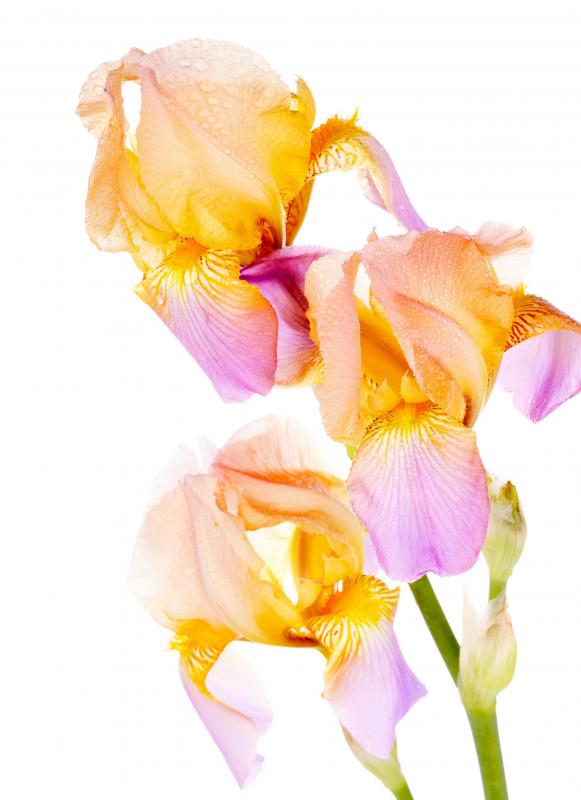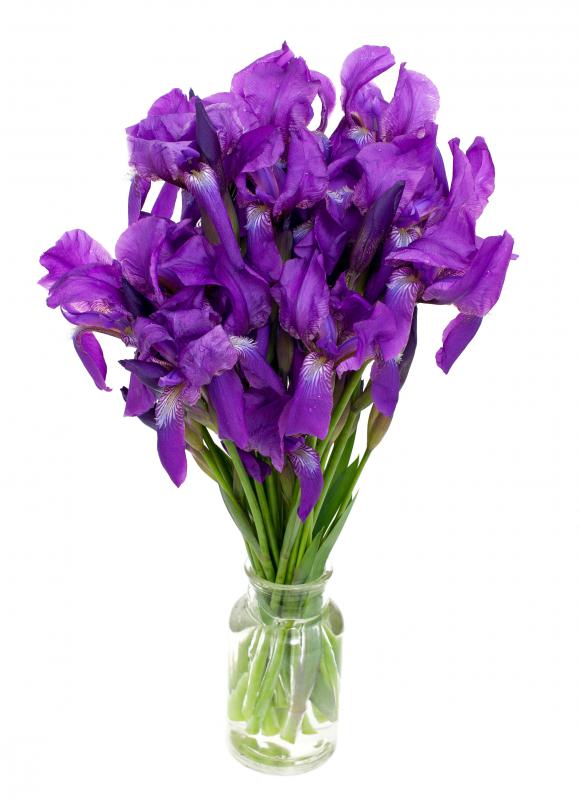At HomeQuestionsAnswered, we're committed to delivering accurate, trustworthy information. Our expert-authored content is rigorously fact-checked and sourced from credible authorities. Discover how we uphold the highest standards in providing you with reliable knowledge.
What are the Best Tips for Planting Iris Bulbs?
As with any task of planting flowers and plants, the first step in planting iris bulbs should be choosing an ideal location for the plant bed. When planting iris bulbs, a good way to begin is by choosing the correct soil to nourish and promote healthy growth and maturity. It is also essential to begin the planting process at the most optimal time of year for the best success.
The iris plant will do best in full sunlight, although partial sunlight for several hours a day is fine. Therefore, the bed should not be in a completely shady spot. It's also a good idea to place a picket fence or other barrier around the iris bed to protect the plants from small animals that could potentially destroy the bulbs.

One thing to avoid when planting iris bulbs is allowing the soil to become overly damp. This plant will not thrive in overly wet soil, so good drainage is a must. Organic compost is a good choice for the soil. In any case, the beds should not be directly on the ground but slightly higher to allow the soil to drain adequately. Another tip for planting the iris bulbs is adding a quality fertilizer to the soil.
It's not a good idea to plant the iris bulbs during the hot summer months. Early autumn is generally the best time to begin. Waiting too late, however, may prove detrimental to the iris bulbs if an early frost should occur.

Unfortunately, may people make the mistake of overcrowding when planting iris bulbs. This can kill off the plant before it has a chance to reach maturity. Allowing proper distance between each bulb is essential. The iris plant can expand greatly upon maturity.
The iris comes in a wide array of species and varieties, so with approximately 200 types to choose from, mixing and matching within the bed can add a splash of color. Planting the iris bulbs in the right depth of soil will help them grow nicely. The roots should be planted into the soil with the fleshy section above the surface. If desired, a rock garden border can add a decorative touch.
Another thing to bear in mind is that iris plants are generally hardy and long lived. With proper care and minimum fuss, these colorful plants can endure for quite a long while. Transplanting an iris plant is not an especially difficult task.
AS FEATURED ON:
AS FEATURED ON:













Discussion Comments
I'm sure it's a lot easier to grow irises in places like Oregon and California, but are there any that can actually thrive in more arid areas? I live where there's not a lot of rain, so the ground is dry all the time. I love irises, but I can't keep them alive. Maybe it's just me, but I don't see any neighbors with them either.
Post your comments